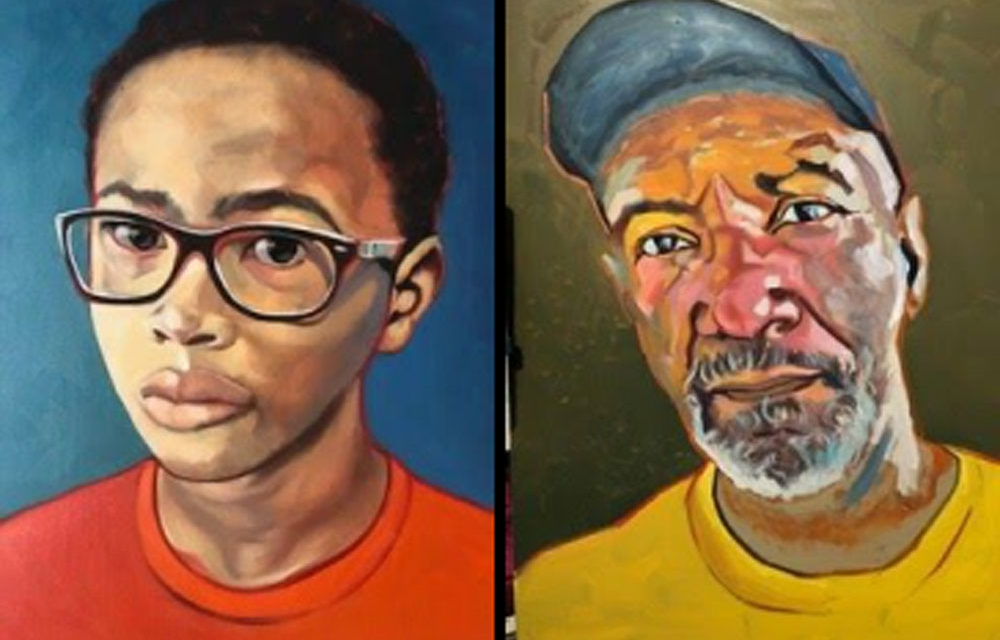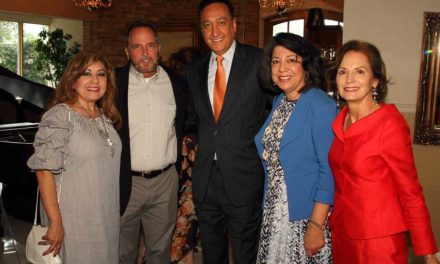Lionel Sosa has been painting almost non-stop since last summer when he decided he would join others who wanted to see racial justice a reality. A retired CEO of a highly successful Hispanic marketing firm, Sosa has been painting portraits, mostly of ordinary people, cowboys, blue-collar workers, entertainers, and such, for much of the past ten years.
Sosa assumed a new artistic purpose in June of 2019, when he came upon a poster that stated: “You can’t be anti-racist, unless you’re acitively anti-racist.” At that moment, Sosa decided to paint a representation of Black men and boys from the San Antonio community with the aim of giving “better understanding of each other as a community.”
Sosa’s artistic project, “Living in My Skin-Black Men in San Antonio Tell Their Story” will be featured on PBS station KRLN in February 2021 during Black History Month. His 33 subjects, whom he has painted in oil-on linen, range in age from 10 to 90 and include ordinary Black citizens, retired military officers, and a Chief of San Antonio’s Fire Department. They came to his studio wearing a favorite cap or hat, a special tie or bow tie, or a formal suit or colorful T-shirt. In each portrait, he brilliantly captures a particular look, a mood, an emotion, a curiosity, an air of confidence.
The need for greater understanding of one another in San Antonio and elsewhere in America seemed to resonate with many, Blacks, Whites, Latinos, and Asians in the aftermath of the horrific murder of George Floyd by a white police officer in May 2020. Millions, spurred by the viewing of a nine minute video of Floyd’s senseless choking, marched in every city of America, as well as in major cities of Western Europe. The marchers represented all races and ethnicities and many held handmade placards calling for racial justice and an end to police killings. Demonstrators in some Western cities, such Portland, Oregon, were largely white, including many from the suburbs.
The marches were not a surprise to many Black writers and social critics. The talented and astute observer of Black America, Ta-Nehisi Coates, noted to a Princeton audience: “There’s a way in which certain people take too much comfort in progress… For instance, we can have progress for the rest of American history and black people could still be unequal.”
The majority of the demonstrations were peaceful, although some turned violent. While the Constitution gives every American a right to demonstrate and voice
grievances, that right was denied to peaceful demonstrators one afternoon in Lafayette Park in Washington D.C. on June 1, 2020. Their peaceful protest turned violent when a score of “federal agents” turned a calm event into one of chaos. Men and women, young and old, and mothers with young children were chased off the park with pepper spray in order to give President Donald Trump his public space across the street for a promotion photo op.
All of Sosa’s “Living in My Skin” subjects are residents of San Antonio, many native to the city, as is Sosa. The Eastside, where the majority of the city’s Black population had traditionally lived, was also home for a time to Sosa’s immigrant grandmother, Cristina Sosa. She emigrated from Mexico in the mid-1920s when the country was saddled with violence and political turmoil following the twilight years of the Mexican Revolution. Her son Roberto, Lionel’s dad, helped his mother make ends meet by taking in laundry for the neighbors.
In the mid 1930s, the Sosa family moved to the Westside of San Antonio, a place where Cristina Sosa earned extra money as a midwife. Her son Roberto continued in the laundry business and opened his business on Commerce Street in the heart of the Prospect Hill commercial sector. Lionel Sosa and his brother Robert were born in the back family section of the laundry. Lionel is a proud graduate of Lanier High School and remains active with the alumni group. He is a generous donor to their scholarship programs.
Today, Lionel and his wife Kathy, also an accomplished artist and author, spend their time in their studio on Lavaca street in San Antonio’s Southtown. Together they worked on the publication of “The Children of the Revolution: How the Mexican Revolution Changed America” [2012] More recently, Kathy Sosa has published with Trinity Press, “Revolutionary Women” which she describes as a celebration of “the women of early Texas and Mexico who refused to walk a traditional path.”
The Sosas both love to paint and write. Their path reminds us all of Ta-Nehisi Coates’ words .“Doing what you love will lead to change,” adding that in seeking change, “ultimately, the answer is within you.”
Lionel Sosa’s Portraits of San Antonio’s Black Community










